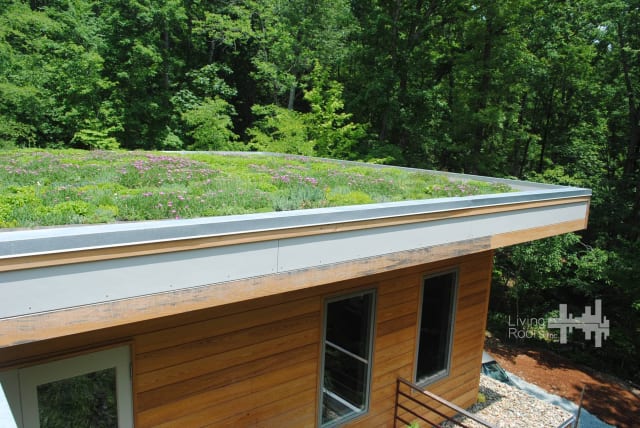Whether you’re a homeowner in need of a new roof or an intrepid architect seeking out unique roofing details, you’ll have your choice of materials. The standard for most homes in the U.S. is asphalt shingles, followed by clay tiles, wood shakes and metal roofing. One medium often not considered in North America is living vegetation.

An extensive green roof on a residential building. (Image courtesy of Living Roofs.)
Though “green roofs” or “living roofs” have been found in Europe for at least 40 years, the trend to treat roofs as yet more substrate on which to grow plants has only sprouted up in North America over the last 10. To learn more about living roofs, engineering.com has decided to explore the topic in depth.
What Is a Living Roof?
There are three main types of green roofing, determined by the depth of the planting and the level of maintenance they require: intensive, semi-intensive and extensive. While extensive roofs can handle 10 to 25 pounds of vegetation per square foot, intensive roofs aim for 80 to 150 pounds, and semi-intensive fall between those two ranges.
An intensive green roof is more like a rooftop garden, with a great deal of labor, irrigation and feeding required to maintain plants with roots that grow deep into 7 to 24 inches of soil. Some even include water features, such as small ponds. Extensive roofs, in contrast, are meant to be self-sustaining with 1.6 to 5 inches of soil and the need for only once-yearly weeding….

